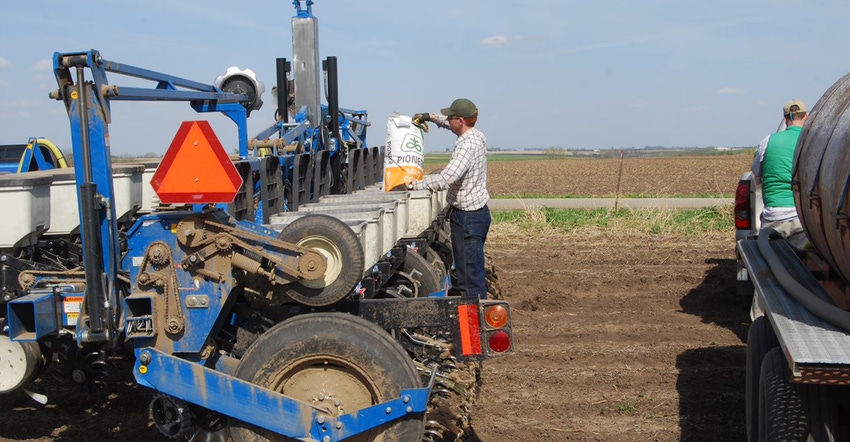May 14, 2019

USDA’s weekly Crop Progress report showed only 36% of the 2019 Iowa corn crop had been planted as of May 5, which was 15% behind the five-year average. The greatest progress has been in central and west-central Iowa at 56% and 57%, respectively, as of May 5.
Since that time, there has been limited opportunity for planting to occur. Current weather forecasts for May 8-14 indicate 2 inches of rain and 20 to 30 lower-than-normal growing degree day accumulations across Iowa, which may cause additional planting delays.
As planting is delayed, you need to understand the effect of planting delays and corn relative maturity on yield potential. At the state level, historical data from the USDA National Agricultural Statistics Service indicate that if 50% of the corn is planted before May 15, the chances for high yield potential still exists. In only five of 40 years, the 50% corn planting point has not occurred before May 15. In each of those five years, the statewide corn yield was below trendline.
Don’t switch before June 1
High yield potential is still possible as planting is delayed into mid-May. The greatest yield potential is still realized by planting well-adapted, full-season hybrids up until June 1. Corn relative maturity is based on the number of GDDs from planting to maturity. When corn is planted later than May 1, hybrids mature in about 6.8 fewer GDDs per day delay beyond May 1.
For example, a typical 105-day hybrid planted on May 1 would mature in 2,600 accumulated GDDs. But if it were planted on May 30, it would only require 2,396 GDDs. Recent data from Iowa studies indicate that changing hybrid relative maturity before June 1 does not offer any benefits.
This coupled with a strong positive correlation between corn relative maturity and yield (i.e., longer corn relative maturity hybrids have greater yield potential) further supports not changing hybrid relative maturities with delayed planting until after June 1.
Plant earlier-maturity corn in June
Delayed planting will result in later crop maturity and increased risk of fall frost damage if early fall frost occurs. It is possible for warmer-than-normal temperatures to speed corn development and reduce fall frost risk. Ideally, warmer temperatures would be desired during vegetative growth and late reproductive growth to minimize effect on grain yield.
Regardless, fall frost risk increases dramatically when corn is planted in June. For this reason, if the decision is made to plant corn in June, a switch to an earlier relative maturity is recommended. However, it is still important to select a hybrid based on yield potential, disease resistance and overall stress tolerance.
Check average date for first frost
An additional consideration for late-planted corn is that the increased risk associated with delayed planting and crop maturity often relates to potential for higher grain moisture at the time of harvest. When harvest maturity is delayed, there are shorter days and lower air temperatures that, in combination, reduce the rate of grain drying following crop maturity.
This can be remedied by relying on artificial grain drying with added cost, or through planting an earlier relative maturity corn hybrid with greater drydown ability. If planting is delayed past June 1, the decision must be made to:
use a lower relative maturity hybrid well-adapted for area
switch to planting soybeans
consider Delayed and Prevented Planting crop insurance
Switch from corn to soybeans?
Planting corn after June 1 will likely result in lost yield potential of 50 bushels or more per acre. Switching to soybeans has its considerations, too. If nitrogen and herbicide applications have already been made, these are factors that have the potential to negatively affect soybean germination, emergence and nodulation. Many herbicides do not allow planting soybean the year of application.
For delayed and prevented planting situations with crop insurance coverage, the late coverage decreases each day from June 1 to June 25. In a prevented planting situation, crop insurance language states the “cause of loss must be insurable and common to the area.”
Bottom line, if corn planting is delayed past June 1, make a realistic determination of remaining corn yield potential, possible soybean yield potential, and feasibility of delayed and prevented planting coverage with crop insurance. Talk with crop advisers, Extension field agronomists and insurance providers to gather information to make the best decision given the situation.
Licht is an Iowa State University Extension cropping systems agronomist.
Source: ISU is responsible for the information provided and is wholly owned by the source. Informa Business Media and its subsidiaries aren’t responsible for any content contained in this information asset.
About the Author(s)
You May Also Like






